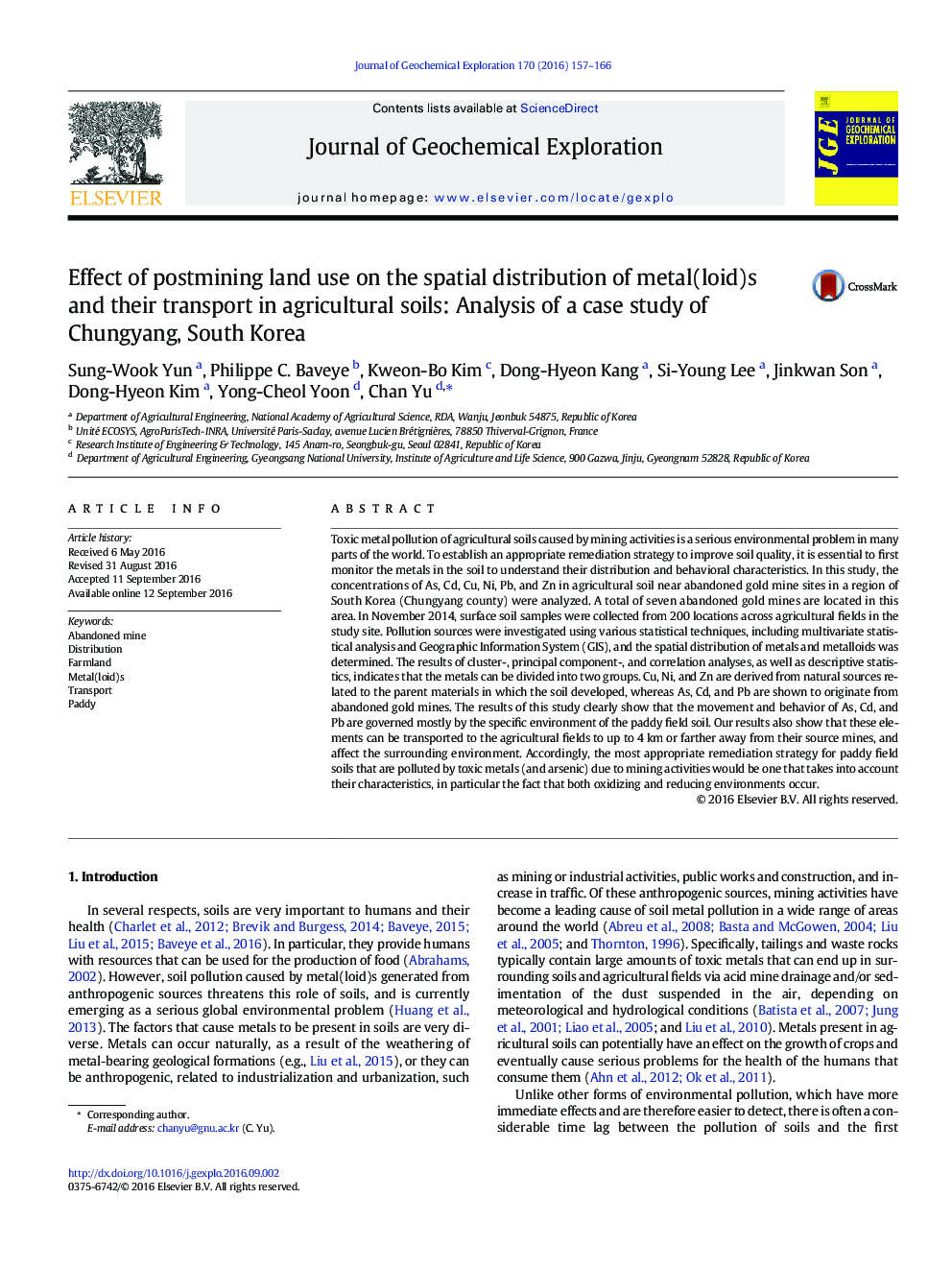| کد مقاله | کد نشریه | سال انتشار | مقاله انگلیسی | نسخه تمام متن |
|---|---|---|---|---|
| 4456890 | 1620889 | 2016 | 10 صفحه PDF | دانلود رایگان |

• An extensive field survey was carried out across agricultural fields of the study area.
• A total of seven abandoned metal mines are located in the study area.
• Multivariate statistical analysis was used to identify pollution sources.
• Behaviors of As, Cd, and Pb were governed by specific environment of flooding paddy field.
• Contaminants can affected the agricultural fields to up to 4 km or farther away from the hot spots.
Toxic metal pollution of agricultural soils caused by mining activities is a serious environmental problem in many parts of the world. To establish an appropriate remediation strategy to improve soil quality, it is essential to first monitor the metals in the soil to understand their distribution and behavioral characteristics. In this study, the concentrations of As, Cd, Cu, Ni, Pb, and Zn in agricultural soil near abandoned gold mine sites in a region of South Korea (Chungyang county) were analyzed. A total of seven abandoned gold mines are located in this area. In November 2014, surface soil samples were collected from 200 locations across agricultural fields in the study site. Pollution sources were investigated using various statistical techniques, including multivariate statistical analysis and Geographic Information System (GIS), and the spatial distribution of metals and metalloids was determined. The results of cluster-, principal component-, and correlation analyses, as well as descriptive statistics, indicates that the metals can be divided into two groups. Cu, Ni, and Zn are derived from natural sources related to the parent materials in which the soil developed, whereas As, Cd, and Pb are shown to originate from abandoned gold mines. The results of this study clearly show that the movement and behavior of As, Cd, and Pb are governed mostly by the specific environment of the paddy field soil. Our results also show that these elements can be transported to the agricultural fields to up to 4 km or farther away from their source mines, and affect the surrounding environment. Accordingly, the most appropriate remediation strategy for paddy field soils that are polluted by toxic metals (and arsenic) due to mining activities would be one that takes into account their characteristics, in particular the fact that both oxidizing and reducing environments occur.
Journal: Journal of Geochemical Exploration - Volume 170, November 2016, Pages 157–166